The basic cornerstones of the Croat ultraright nationalistic ideology
From the point of the ideology of the extreme Croat nationalism, the cardinal goal of ultraright nationalistic parties, groups, ideologists and politicians was to create for the first time after 1102 an independent Croatia, as much as a Greater and finally “Serben-frei”. In the 1990s it was an exactly ultraright nationalistic ideology that provided the main background for creation of a new normative order and values in the HDZ’s Croatia. This ideology had five cardinal cornerstones which gave the framework for building a new institutional order, political values and means to achieve ultimate ethnopolitical goals:
- Legitimization of the Nazi Ustashi NDH from the WWII.
- Establishing a strong authoritarian governmental system in the state and society for the sake to get state independence by the “international community” by provoking a war against the local Serbs.
- Territorial annexation of all “historical and ethnic” territories of Croatia and the Croats.
- Solving the “Serbian Question” within a Greater Croatia by military means.
- Protecting the ideological-clerical conservative stands against the Western liberal views.
Legitimization of the Nazi Ustashi NDH from the WWII
For all Croat ultranationalists, a crucial political reference in regard to the state-building process is the 1941−1945 NDH. They finally succeeded with a great support by Tudjman and his HDZ to rehabilitate the NDH and even to recognize its historical contribution to the Croat state-building efforts. It was done chiefly by a brutal falsification of historical facts and self-interpretation of historical events and the role and deeds of the Croat Ustashi personalities. For the HDZ’s Croatia there were at least four reasons for praising the Ustashi WWII state:
- The NDH gave a political-historical foundation for the post-Yugoslav Croatia’s statehood.
- It annexed majority of a Croat claimed South-East European territories and as such became a kind of historical realization of a Greater Croatia projected by Pavao Ritter Vitezovic in 1700.[1]
- The Ustashi regime showed a way of solving the “Serb Question” and therefore became a blueprint for the coming generations of the Croat “patriots” who had to deal with the Serbs.
- The existence of the NDH provided a necessary link of a self-imagined “proof” of the so-called “Thousand-year-old” legal continuity of the Croatian de facto
All political parties and organizations in Croatia and Bosnia-Herzegovina of the “Croatian rights” profiles even openly propagated their direct connections with the NDH and its führer (poglavnik) Ante Pavelic who himself was a member of the “Croatian rights” party.[2] Here is worth to notice that Franjo Tudjman was during the WWII fighting several months in the Ustashi uniform – a fact which gave a huge credit to him in the eyes of any Croat extremist despite on Tudjman’s Communist past. It is obvious that the ultimate ethnopolitical goals of both the pre- and WWII Ustashi movement and post-Yugoslav “Croat rights” fellows are absolutely identical including and the idea how to solve the “Serb Question” in a Greater Croatia. It was mostly the case with the re-established HSP in 1990 as originally this party defined its program exclusively in relation to the NDH and the WWII Ustashi movement using all kinds of the NDH symbols and iconography. Nevertheless, an original 1990 HSP’s leader, Dobroslav Paraga, never accepted any fascist or Nazi face of the NDH even claiming that this state was anti-fascist.[3] For all Croat extremists, including Tudjman himself, the NDH represented democratic wishes of an overwhelming majority of the ethnic Croats for their own independent state (from Yugoslavia as a “Greater Serbia”) and was the legitimate continuation of the independent Kingdom of Croatia which became de facto incorporated into the Kingdom of Hungary in 1102. Furthermore, all of them negate any engagement of the NDH’s regime in any systematic and organized persecutions or genocide committed on the racial, confessional or ethnic grounds. Moreover, the HSP insists that the Ustashi terror against the Serbs in 1941−1945 was provoked by the Serbs themselves, i.e. by the Partisan uprising in July 1941 against the legitimate and internationally recognized NDH,[4] neglecting the fact that the Ustashi genocide against the Serbs started three months before the outbreak of the Serb-(Partisan and non-Partisan) revolt in the NDH. An HSP’s political cynicism was going up to absurd claims that many of these massacred Serb civilians, in fact, have been killed by the Serb-Chetniks or Partisans dressed in the Ustashi uniforms. Nevertheless, a common issue among all Croat extremists regarding the “Serb Question” is the WWII practice of creation of an Autocephalous Croatian Orthodox Church as a bridge toward the final Catholization and Croatization of Croatia’s Serbs.
The excuse of the Ustashi regime violence in the NDH usually is followed by the claim that the Nazi-Fascist feature and iconography of the NDH were forced upon the Ustashi authorities by Germany and Italy, that the Ustashi Government did as much as possible to protect the Jews within the NDH, and finally, and what is of the crucial importance, that the real number of murdered NDH’s Serbs is very much overestimated by the pro-Serb Yugoslav authorities after the WWII. For instance, instead of 700.000 killed people in the death camp of Jasenovac (“Yugoslav Auschwitz”, of whom 500.000 were the Serbs) today official Croatia recognizes only 86.000. In other words, Jasenovac is a great Serbian falsification and political propaganda: a myth projected by the supporters of an idea of a Greater Serbia.[5] For the Croat extremists, among the victims of Jasenovac the largest number have been the ethnic Croats but not the ethnic Serbs.[6] The Croat rightists as apologists for the Ustashi movement and their Nazi racist regime claim that the NDH is falsely represented for purely political reasons and, therefore, the pictures of the NDH have to be repainted. However, such repainting or rewriting of the NDH’s history is in a pure odd to historical sources and scientific account of non-partisan historiography. Finally, Dr. Franjo Tudjman himself, as a professional historian, in his most important book (Wastelands of Historical Reality) sought to minimize the crimes of the Ustashi regime in the WWII against both the Serbs and the Jews.[7]
A rehabilitation of the legacy of the NDH and Ustashi ideology with the NDH’s iconography was, however, only a formal problem for Franjo Tudjman and his HDZ who have been officially ambivalent toward it. Tudjman knew very well that any close association with the NDH and Ustashi ideology and iconography will cause many problems for Croatia’s image abroad especially among the Jewish communities and their political lobbies. However, on the other hand, for Tudjman the NDH was giving the state-building example as Croatia for the centuries did not have any experience of a real and internationally recognized statehood. For that reason, for the HDZ’s ideologists, the NDH became a crucial element for completing the main party’s task – to unify within the umbrella of the HDZ all Croats. In addition, the NDH was giving a link to the Vatican as the main supporter of both the Ustashi and the HDZ regimes and ideology.[8] Subsequently, the HDZ’s authorities did not and do not openly endorse the Ustashi movement and the NDH, as it is the case with of “Croat rightists”, but on the other hand both Tudjman and his HDZ had avoided any clear denunciation of the NDH’ Nazi, totalitarian, genocidal and above all Serbocidal aspects. Moreover, the HDZ’s Croatia adopted all-important symbolic and iconographic aspects of the WWII NDH (like kuna currency, state insignias, etc.) and dedicated streets, squares and monuments in Croatia to the Ustashi WWII officials. Tudjman himself as a President of Croatia nominated, for instance, two ex-WWII Ustashi officials to high state posts: Ivo Rojnic – Ustashi commander in Dubrovnik who became Croatia’s ambassador in Argentina and Vinko Nikolic – an official in the Ministry of Education of the NDH who got a seat in the Parliament. Alongside with the rehabilitation of the Nazi NDH, in Tudjman’s Croatia it was rehabilitated and the WWII Croatian Roman Catholic Church with its head Archbishop Alojzije Stepinac who directly collaborated with the Ustashi regime and headed the practice of Catholization of the Orthodox Serbs.[9]
A linguistic nationalism or purification of the official standardized Croat language in the public usage but mainly from the Serb language-based lexemes was on the very agenda of the Croatization of Croatia by Tudjman’s regime.[10] However, a lexical purification of the Croatian language in Tudjman’s Croatia was done basically according to the NDH’s pattern. One of the first steps in the process of Croatization and purification of the Croat language by the new HDZ’s authorities was to make a clear difference between the Croat and Serb languages from lexical, orthographic and grammar points of view. It was done by a set of scientific editions by the linguists and philologists who have been at the same time trying to present and a “proper” history of the Croat language with the cardinal political goal to show that the Croat and the Serb always have been two different ethnonational languages and what is of the most importance that the Shtokavian dialect was all the time and the Croat national language but not only the Serb.[11] As a final ethnopolitical consequence of the HDZ’s policy of linguistic nationalism was that the Serb ethnic name was expelled from the official name of the standardized language and its orthography in Croatia likewise everything that was in connection with the Serbs in regard to the Croat language.[12]
As the best mean to hide its de facto support for the Nazi Ustashi ideology and the WWII NDH’s legacy, Tudjman’s regime officially and rhetorically supported the “anti-fascist” Josip Broz Tito’s Partisans from the WWII[13] with the manifestation of political option that the post-Yugoslav Croatia is building her own statehood on the “anti-fascist” People’s/Socialist Republic of Croatia legitimacy after 1945. However, at the same time, the HDZ created a clear atmosphere in Croatia in which the victims of the Ustashi terror (primarily the Serbs) are regarded as the national enemies. For the matter of illustration, up to January 1996 around 3.000 “Partisan” monuments were destroyed or removed in Croatia.[14] Tudjman launched an initiative to transform a death camp of Jasenovac’s memorial center (on the left bank of Sava River that is on Croatia’s side) from the “victims of fascism” to the “victims of the civil war” – an initiative that was in fact just camouflaged association with the NDH which pleased all Croat extremists. The Croat security forces even before the beginning of the civil war in Croatia in 1991 heavily structurally damaged the museum building of Jasenovac when a bigger part of documentation and torture evidence simply disappeared but the monument itself was not destroyed or damaged for the very reason as the monument is in fact composed by four Ustashi “U” letter-symbols.
Franjo Tudjman, a Ph.D. in history, ran in conflict with the Yugoslav Communist authorities in the mid-1960s when he started to refute the official number of murdered ethnic Serbs in Jasenovac as too high, accusing at the same time the Yugoslav Communists for deliberately falsifying the truth on Jasenovac. It cost him dismissal from the post of a head of the Institute for the History of the Workers Movement in Croatia (in Zagreb) but this action marked the beginning of the process of Tudjman’s transformation from a Partisan General to the Croat nationalist and extremist. Nonetheless, his cosmetic political moves like removing a prominent Ustashi extremist Tomislav Merchep from the HDZ’s Executive Committee at the Third General Convention of the HDZ in October 1995 could not hide the HDZ’s infatuation with the Ustashi iconography, ideology, legacy and ethnopolitical goals.
Tudjman’s and HDZ’s preoccupation with Croatia’s state-building and solving the “Serb Question” rather than establishing liberal-democratic political system and institutions meant that the NDH’s legacy continued to play a very important role in the HDZ’s strategy and policy of creation of the new normative order and values. In the other words, the political-ideological mainstream of the HDZ’s Croatia was and is grounded on the appropriation of the NDH’s legacy.
Today, as a result of the HDZ’s policy of extreme ethnoconfessional nationalism, Croatia is, since mid-1995, “more ethnically homogeneous than ever was in the historic past”.[15] The Serb population on the present-day territory of Croatia fell from 24 percent in 1940 to 12 percent in 1990 and 4 percent in 1996 with the practice of its everyday assimilation (Croatization) and emigration from Croatia.
The authoritarian militarization of the ethnic Croats
The Croat ultranationalists (i.e., the followers of the Ustashi movement) called in the 1990s for the full scale of Croatia’s militarization in order to achieve their chauvinistic and racist political goals of the Croat-based ethnically pure independent (a Greater) Croatia. In their opinion, a full or complete political independence of the ethnically pure Croatia within the borders of the Socialist Republic of (a Greater) Croatia could be reached only by the open war against Croatia’s Serbs and the Yugoslav authorities, but not negotiating with them. In this respect, a leader of the most ultranationalistic political party in Croatia – the HSP, Ante Djapic, was clear in his statements to abandon the political activity if a single part of the territory of Croatia is going to be lost by the negotiations with the Serbs.[16] The WWII Ustashi movement followers openly advocated in the 1990s a full scale of the war against “the Serb aggressors” for the sake to gain Croatia’s independence and to clean Croatia from the ethnic Serbs. That was done at least for two crucial reasons:
- They believe that a struggling for the Croat nation’s ethnopolitical goals was a legitimate framework of both a beating the Serb nationalism and fulfilling the Croat historical task of creation of a Greater Roman Catholic Croatia without the Orthodox infidels.
- They sponsored the attitude that the Serbs cannot be trusted as a nation to negotiate with them about the peaceful agreement on the disputed issues with Croatia’s Government and therefore the war was the only way to pacify the Serbs from Croatia according to the pattern of the pacification (i.e., the ethnic cleansing) of the Palestinians in Israel.[17]
Henceforth, the “Israelization” of a Greater Croatia became the ultimate goal of the Croat ultranationalists in their policy to Croatia’s Serbs. In order to achieve their “Israelization” political goals, the Ustashi followers in the HDZ’s governed Croatia followed exactly the militarization pattern of the ethnic Croat society in the WWII NDH. Therefore, the most ultranationalistic Ustashi political party in the 1990s Croatia – the HSP, established its own ruthless paramilitary party’s militia in 1991 under the name of the Croat Defense Forces (the HOS) with using all kinds of the WWII Ustashi regime insignia followed by several similar militia detachments by the other Croat ultranationalistic organizations. The Croatian state army (the HV) was, nevertheless, during the 1990s under direct influence and control by the most extremist wing of the ruling HDZ that successfully cooperated with the HOS and the other Croat paramilitaries in West Herzegovina and North and Central Bosnia in the military actions of ethnic cleansing of the Orthodox Serbs and the Muslim Bosniaks.[18]
The eminent militarization of the ethnic Croat society in the 1990s was in direct coordination with the fundamental task of all Croatia’s Croat ultranationalists that all other rights and duties of the society have to be put in the service of the state interests. As all ultranationalistic segments of the ethnic Croat society in Croatia fought for an independent and pure ethnic Croat Croatia, the ultimate ethnopolitical goal of them was to mobilize all ethnic Croats for the execution of the final solution of the “Serb Question” in a Greater Tito-Tudjman’s Croatia. Therefore, the authoritarian political system and government based on the absolute HDZ’s majority in the Parliament were necessary in order to achieve this goal. As an example, the experience of the Latin American dictatorship as in the 1970s and the 1980s of a centralized political system, strong military-police forces, oppressed freedom of the mass media, and above all a silent opposition were activated. A parliamentary multi-party democracy became just a façade of a classical Latin American dictatorship[19] as a Western parliamentary democracy[20] was understood as a harmful experiment for the realization of the Croat ethnopolitical goals primarily against the Serbs.
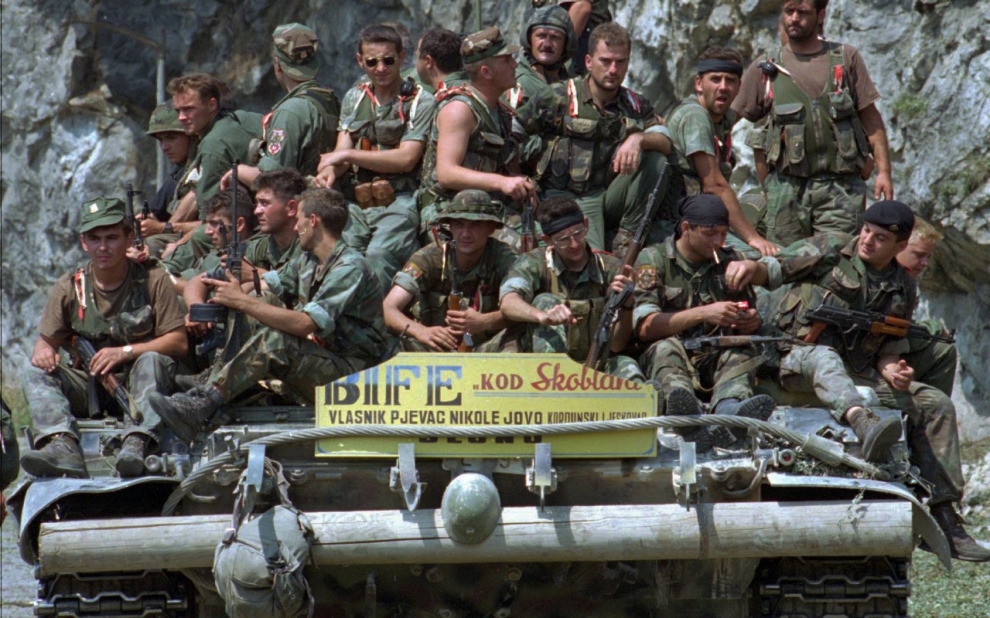
The alternative to the parliamentary democracy was only a one-party’s dictatorship that could save Croat national interests from the destructive nature of the parliamentary system. Subsequently, in the 1990s it was established in Croatia an HDZ’s one-party political system with a strong cult of the leadership of the President Dr. Franjo Tudjman, who was seen in the eyes of the right-wing political structures as a political reincarnation of the WWII NDH’s führer, Ante Pavelic.[21] Tudjman, as an inviolable dictator of Croatia, was even proclaimed by some of the HDZ’s members and other right-wing followers as a “Father of the Homeland” like by Hrvoje Shoshic who was a leader of the Croat Party (the HS) and an MP.[22] In essence, the Croat extremists only declaratively supported liberal democratic institutions while in the practice rejected them as the political framework within which the national goals are going to be achieved. However, a formal support for the liberal democracy and its political institutions were of the very practical nature to present a newly independent Croatia as a Western-type democratic political system in contrast to Miloshevic’s Serbia as an expression of the Balkan/Oriental political autocracy and cultural barbarism. Hence, the HDZ’s Croatia pretended to present herself as a last bulwark of the European civilization and values in South-East Europe. Nevertheless, in the practice, the HDZ functioned in all ways that undermined a real democracy even to a greater extent than Miloshevic’s regime in Serbia at the same time. The extremist wing within the HDZ, including and Tudjman himself, openly used all kind of mechanisms of political oppression against the oppossition that was proclaimed as the enemy of the Croat nation and Croatia and collaborators with the „Serbo-Chetnik aggressors“. As in many cases of personal dictatorship, Tudjman as well saw himself as a personalization of the state and state institutions. In other words, he attempted to equating his own personality with the survival of Croatia. As the opposition leaders and party’s members have been constantly under the physical and psychological intimidation as the „betrayers“ of Croatia it was created a very inhospitable political atmosphere for any sincere democratic talks and exchange of the views. Surely, Tudjman’s regime in Croatia was much more effective in silencing its own oppossition than Miloshevic’s regime in Serbia. It is visible at least from the fact that in Tudjman’s Croatia there was no single mass-meeting of the opposition against the regime differently to Serbia under Miloshevic’s strong hands. The latter finally and lost power exactly after the mass-protests in Belgrade on October 5th, 2000 (the first „Colored Revolution“ in Europe).
Tudjman’s authoritarian dictatorship was especially hostile towards the opposition press that was considered as a fifth column in Croatia. The opposition journalists were accused of irresponsible (miss)use of their freedom of expression. As a matter of fighting against the opposition press, it was introduced a special (illegal) taxation of independent weeklies but primarily of the most anti-regime’s newspaper – the Feral tribune from Split.[23] During the election campaigns, the opposition parties were denied equal and full access to the state-controlled press and TV, likewise in Serbia, and therefore violating one of the fundamental elements and conditions of the parliamentary democracy. Hence, the electoral results theoretically were not fair what does not mean that a majority of the ethnic Croats from Croatia would not vote for the HDZ in the case of the fair electoral campaign. Similarly to all totalitarian regimes, the HDZ’s controlled Parliament passed a special law (in spring 1996) for „defamation“ against the state officials. However, such or similar law did not exist in Miloshevic’s Serbia. Tudjman’s personal efforts to make stronger his own political (authoritarian) position in Croatia at any cost of liberal democratic institutions are obvious and very similar to his counterpart in Serbia in the 1990s with one difference: Tudjman was more successful in destroying liberal democracy in Croatia in comparison to Miloshevic’s efforts to do the same in Serbia.
For the HDZ’s political leadership, „without Franjo Tudjman, there would be no HDZ and without the HDZ there would be no Croatia“.[24] It is clear that Tudjman’s party attempted to equate itself with the creation and survival of the post-Yugoslav Croatia while Tudjman himself attempted to personalize the institution of the presidency. Any opposition to himself or his political party were seen as the opposition to Croatia as the stare and the Croats as the nation that is probably mostly visible from the fact that Tudjman as a President of Croatia refused to ratify electoral results for the Zagreb municipality’s mayor in 1995 as the opposition leader won under the excuse that Croatia’s capital cannot be in the hands of the enemies of Croatia.[25]
To be continued
Reposts are welcomed with the reference to ORIENTAL REVIEW.
[1] P. R. Vitezović, Croatia rediviva: Regnante Leopoldo Magno Caesare, Zagreb, 1700.
[2] On Pavelic’s biography, see [B. J. Fischer (ed.), Balkan Strongmen: Dictators and Authoritarian Rulers of Southeast Europe, London: C. Hurst & Co. (Publishers) Ltd, 2006, 228−271].
[3] For instance, see interview with Paraga, Danas, Zagreb, 1991-03-5.
[4] The NDH was recognized by Germany, Italy, Slovakia, Hungary, Romania, Japan, Spain, National China, Finland, Denmark, and Manchuria. It existed from April 10th, 1941 to May 15th, 1945 [S. Srkulj, J. Lučić, Hrvatska Povijest u dvadeset pet karata. Prošireno i dopunjeno izdanje, Zagreb: Hrvatski informativni centar, 1996, 105].
[5] On Tudjman’s Croatia’s dealing with the population losses in the NDH and the rest of Yugoslavia, see [V. Žerjavić, Population Losses in Yugoslavia 1941−1945, Zagreb: Hrvatski institut za povijest, 1997]. Compare with [С. Аврамов, Геноцид у Југославији у светлости међународног права, Београд, 1992].
[6] See, for instance, Election Declaration of the Croatian Party of Rights in 1992 [Izborna deklaracija Hrvatske stranke prava, Zagreb, 1992, 3].
[7] F. Tudjman, Bespuća povijesne zbiljosti, Zagreb: Matica Hrvatska, 1989.
[8] On direct links between the NDH and Vatican, see [Tajni dokumenti o odnosima između Vatikana i ustaške NDH, Zagreb, 1948; V. Dedijer, Vatikan i Jasenovac. Dokumenti, Beograd, 1987; D. Živojinović, D. Lučić, Varvarstvo u ime Hristovo. Prilozi za Magnum Crimen, Beograd, 1988; M. Bulajić, Misija Vatikana u Nezavisnoj Državi Hrvatskoj, I−II, Beograd, 1992; М. А. Ривели, Бог је с нама: Црква Пија XII саучесника нацифашизма, Никшић: Јасен, 2003; Д. Р. Живојиновић, Ватикан, Католичка црква и југословенска власт 1941−1958, Београд: Просвета−Терсит, 1994, 11−127].
[9] On Stepinac’s case, see [A. Benigar, Alojzije Stepinac hrvatski kardinal, Rim, 1974; S. Alexander, The Triple Myth: A Life of Archbishop Stepinac, New York, 1987; М. А. Ривели, Надбискуп геноцида: Монсињор Степинац, Ватикан и усташка диктатура у Хрватској 1941−1945, Никшић−Јасен, 1999].
[10] A linguistic nationalism was a common issue in all former East European countries after 1990 as the language was and still is understood as the main identifier of the ethnic nation. On the linguistic nationalism in ex-Yugoslavia in the 1990s, see [S. Barbour, C. Carmichael (eds.), Language and Nationalism in Europe, Oxford−New York: Oxford University Press, 2000, 221−239].
[11] On this issue, as examples, see [V. Brodnjak, Razlikovni rječnik srpskog i hrvatskog jezika, Zagreb, 1991; M. Moguš, Povijest hrvatskoga književnoga jezika, Zagreb: Globus nakladni zavod, 1993; M. Kačić, Hrvatski i srpski: Zablude i krivotvorine; Zagreb: Zavod za lingvistiku Filozofskoga fakulteta Sveučilišta u Zagrebu, 1995; M. Lončarić, Hrvatski jezik, Opole: Uniwersytet Opolski–Instytut Filologii Polskiej, 1998]. Compare with [П. Милосављевић, Срби и њихов језик. Хрестоматија, Приштина: Народна и универзитетска библиотека, 1997].
[12] M. Okuka, „O osamostaljivanju hrvatskog književnog jezika“, А. Кюннапа, В. Лефельдта, С. Н. Кузнецова (ред.), Микроязыки, языки, интерязыки. Сборник в честь ординарного профессора Александра Дмитриевича Дуличенко, Тарту, 2006, 231. On the Serbian point on the Croat, Serb and Bosnian languages, see [B. Tošović, A. Wonisch, (eds.), Die serbische Sichtweise des Verhältnisses zwischen dem Serbischen, Kroatischen und Bosniakischen, I/4, Novi Sad: Institut für Slawistik der Karl-Franzens-Universität Graz−Beogradska knjiga, 2012].
[13] For the matter of historical accuracy, the Partisans of Josip Broz Tito (half Slovene and half Croat) during the WWII have not be fighting against the Germans, Italians and Ustashi forces if they are not attacked by them. Moreover, during the whole war the Partisans collaborated primarily with the NDH regime and its armed forces but with the Germans as well. Therefore, the “anti-fascist” aspect of Tito’s Partisans and the Communist Party of Yugoslavia (the KPJ) is falls and invented by the Yugoslav Communists themselves. On this issue, see [М. Самарџић, Сарадња партизана са Немцима, усташама и Албанцима, Крагујевац: Погледи, 2006; В. Б. Сотировић, Кривотворине о Јосипу Брозу Титу, Брозовим партизанима и Равногорском покрету, 1941. г.−1945. г., Виљнус: Југославологија – Независни истраживачки центар за југословенске студије, 2014]. About Josip Broz Tito, see [В. Адамовић, Три диктатора: Стаљин, Хитлер, Тито. Психопатолошка паралела, Београд: Informatika, 2008, 445−610; П. Симић, З. Деспот, Тито: Строго поверљиво. Архивски документи, Београд−Службени гласник, 2010; П. Симић, Тито: Феномен 20. Века. Треће допуњено издање, Београд: Службени гласник, 2011; J. Pirjevec, Tito in tovariši, Ljubljana: Cankarjeva založba, 2011; V. Dinić, Tito (ni)je Tito. Konačna istina, Beograd: Novmark doo, 2013].
[14] Vreme, Beograd, 1996-01-15.
[15] S. Barbour, C. Carmichael (eds.), Language and Nationalism in Europe, Oxford−New York: Oxford University Press, 2000, 228.
[16] Interview with Ante Djapic (July 13th, 1994), J. A. Irvine, “Ultranationalist Ideology and State-Building in Croatia, 1990−1996”, Problems of Post-Communism, July/August 1997, pp. 36, 42; Glas Slavonije, Osijek, 1995-08-18.
[17] Interview with Ante Djapic (July 13th, 1994), J. A. Irvine, “Ultranationalist Ideology and State-Building in Croatia, 1990−1996”, Problems of Post-Communism, July/August 1997, pp. 36, 42. On the ethnic cleansing of Palestine by the Israeli Jewish authorities, see: I. Pappe, The Ethnic Cleansing of Palestine, Oxford: Oneworld, 2011.
[18] For instance, in the case of the village of Ahmici in the Lashva Valley (the Vitez municipality) on April 16th, 1993 when around 120 Bosniaks were massacred by the forces of the Croat Defense Council (Ch. R. Shrader, The Muslim-Croat Civil War in Central Bosnia: A Military History, 1992−1994, College Station, Tex., 2003, 92−95).
[19] On the Latin American dictatorships, see: S. Mainwaring, A. Pérez-Liñán, Democracies and Dictatorships in Latin America: Emergence, Survival, and Fall, New York: Cambridge University Press, 2013; J. Dávila, Dictatorship in South America, Chichester: Wiley−Blackwell, 2013; J. A. Galván, Latin American Dictators of the 20th century: The Lives and Regimes of 15 Rulers, Jefferson, NC−London: McFarland & Company, Inc., Publishers, 2013.
[20] On democracy, see: B. Crick, Democracy: A Very Short Introduction, Oxford−New York: Oxford University Press, 2002; Ch. Tilly, Democracy, Cambridge−New York: Cambridge University Press, 2007; J. B. Pilet, W. P. Cross (eds.), The Selection of Political Party Leaders in Contemporary Parliamentary Democracies: A Comparative Study, New York: Routledge, 2014.
[21] It is known that Tudjman did not oppose often practice of the Nazi salutation to him as it was, for instance, in 1995 on the football stadium in Split (Poljud) [J. Guskova, Istorija jugoslovenske krize (1990−2000), 2, Beograd: Izdavački grafički atelje “M”, 2003, 418].
[22] According to Tanjug, 1995-05-21.
[23] The Feral Tribune was the most important Croatia’s newspaper that was writing about the terrible war crimes committed by the regular Croatian police forces against the Serb civilians during the bloody destruction of Yugoslavia. For instance, it was published an interview with Miro Bajramovic, who was a member of the First Zagreb police detachment for the special tasks (the „Autumn Rains“ detachment) in autumn 1991. Bajramovic recognized that he personally killed at that time 72 persons including 9 women in the region around the town of Pakrac in Slavonia [Feral Tribune, Split, 1997-09-01]. About the Croat crimes against the Serbs was writing as well Croatia’s newspaper Arkzin which, for instance, published in July 1994 a list of 75 killed Serbs from the town of Gospic in the Krajina region [S. Kovačević, P. Dajić, Hronologija jugoslovenske krize 1994, Beograd: Institut za evropske studije, 1995, 127].
[24] Novi list, 1995-10-15.
[25] Р. Арсенић, „Остварени сви циљеви“, Политика, Београд, 1995-12, 7.
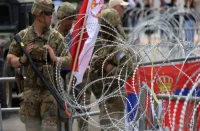
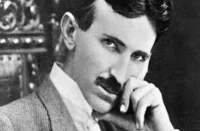
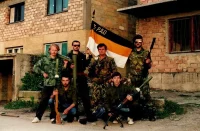



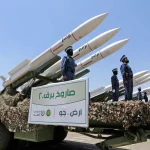
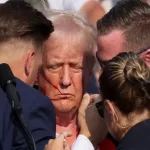
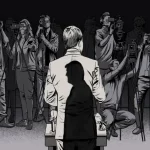





Comments